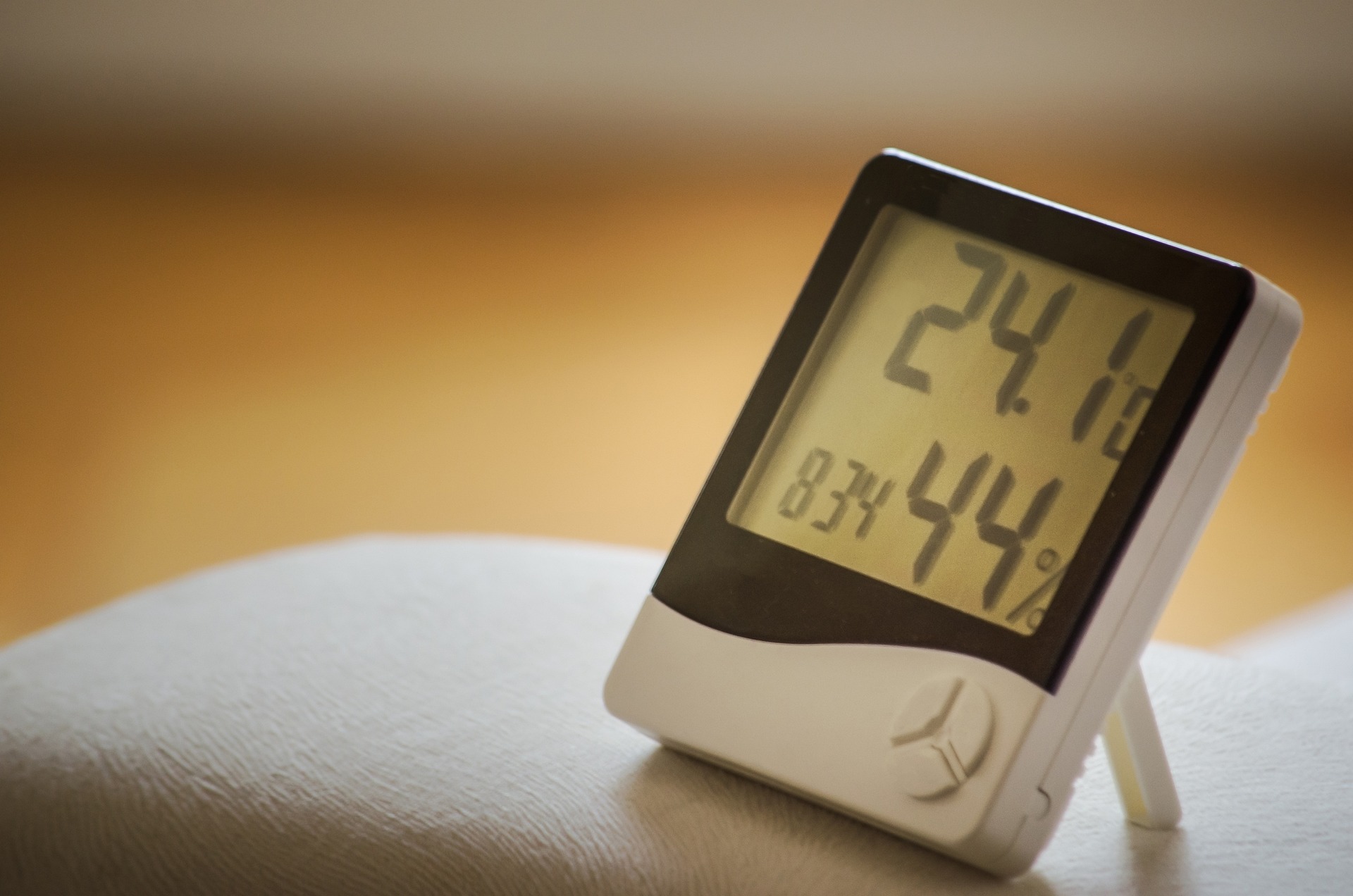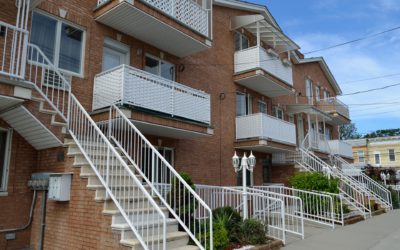Humidity is the measurement of water vapor present in the air, and it’s expressed as a percentage of the air’s total capacity to hold water vapor. High humidity levels indicate that the air is saturated with moisture, while low humidity levels mean that the air is relatively dry. Humidity levels can fluctuate depending on factors like temperature, air pressure, and location. Excessive humidity can cause discomfort, while low humidity levels can result in skin dryness and respiratory irritation.
What happens if the humidity is too high in the house?
When a home has excessive humidity levels, it can result in a range of problems that can impact the residents and the property. These issues include the growth of mold and mildew, the development of unpleasant odors, and the potential for damage to furniture and electronics. Here are some more issues that high humidity levels in a home can cause:
Musty odors
The presence of moisture in the air can promote mold and mildew growth, which emits a distinctive musty odor. Unfortunately, even after addressing the underlying cause, these odors can persist for an extended period. Moreover, high humidity levels can foster bacterial growth, resulting in additional unpleasant odors. To avoid musty odors, it’s essential to regulate the humidity levels in your home and address any mold or mildew growth promptly.
Mold and mildew growth
Mold and mildew are fungi that thrive in warm and damp environments, making high humidity levels in a home a common culprit for their growth. These fungi tend to develop in areas with excessive moisture, such as bathrooms, basements, and kitchens. Not only can mold and mildew cause various health problems, such as allergies, respiratory issues, and skin irritation, but they can also cause structural damage to the home and produce unpleasant odors.
Damage to furniture and other belongings
Wooden furniture, in particular, can warp, crack, or even rot due to the presence of excess moisture. Similarly, fabrics and upholstery can become damp and develop mold or mildew, leading to permanent stains or damage. Metals are also susceptible to corrosion, resulting in rust and discoloration of metal surfaces. Furthermore, electronics and appliances are prone to damage from high humidity levels, leading to malfunctions or failures.
Increased energy costs
With too much moisture in the air, the home can feel warmer, prompting the air conditioner to run longer and work harder, resulting in increased energy consumption and bills. Furthermore, high humidity can damage insulation, causing it to become less effective and leading to increased heat loss during winter and heat gain during summer.
Decreased home value
Excess humidity levels can result in structural damage to the walls, ceilings, and floors, as well as unsightly mold and mildew growth and damage to hardwood floors, cabinets, and furniture. If left unaddressed, high humidity levels can also pose health hazards, making the home an uninviting living environment. Consequently, potential buyers may be reluctant to invest in a property with high humidity levels, ultimately decreasing its overall value.
Skin irritation
The presence of excess moisture in the air can create a breeding ground for bacteria and fungi, resulting in skin infections and rashes. Moreover, high humidity can weaken the skin’s natural barrier, causing dryness and irritation. Additionally, sweat evaporates slowly in high humidity, leading to a buildup of sweat and oils on the skin’s surface, which can further worsen skin irritation.
How do you get rid of humidity without a humidifier?
One of the simple and effective ways to lower humidity levels in your home is to use a dehumidifier. This device works by drawing in moisture-laden air from the surrounding environment and passing it over a cold coil to extract the excess moisture. The moisture is collected in a reservoir, while the dry air is released back into the room, preventing mold growth, minimizing musty odors, and improving indoor air quality by removing excess moisture. A dehumidifier is particularly useful in high-humidity areas such as bathrooms and basements, where excess moisture can lead to structural damage and health problems. Selecting the right size of dehumidifier for your home and maintaining it regularly is essential to ensure its optimal performance.
Although using a dehumidifier is an effective method for reducing humidity levels in your home, there are several other ways to achieve a better result. Enhancing ventilation, repairing leaks, and minimizing shower duration are among the numerous approaches that can help reduce humidity and sustain a healthy indoor environment.
Increase Ventilation
It helps to circulate air and prevent moisture buildup, which can cause mold growth, structural damage, and unpleasant odors. Airflow can be increased by opening windows and doors, allowing moisture to escape and reducing humidity levels. Exhaust fans installed in moisture-prone areas, like bathrooms and kitchens, are also useful in removing excess moisture from the air. Ceiling fans are helpful in promoting air circulation throughout your home, preventing stagnant air and moisture buildup.
Install a Vapor Barrier
Installing a vapor barrier is an effective solution to lower humidity levels in your home, particularly in basements and crawl spaces. This plastic sheet covers the ground and prevents moisture from entering your home, which can accumulate in the crawl space or basement and cause high humidity levels in the rest of the house. Excessive moisture can result in mold growth, wood rot, and structural damage. By preventing moisture from entering your home, the vapor barrier helps prevent these issues. The installation process is relatively simple and can be done by a professional or a skilled DIYer.
Manage Indoor Plants
Indoor plants can be helpful in reducing humidity levels in your home, but they can also lead to excess moisture in the air. Overwatering or leaving standing water in plant trays can cause moisture to evaporate into the air, resulting in high humidity levels. To manage indoor plants properly, it’s important to water them appropriately and avoid overwatering. Make sure that plant pots have enough drainage and remove any standing water in plant trays. Adding a layer of pebbles in the plant tray can improve drainage and reduce moisture buildup.
Reduce Shower Time
When you take a shower, steam is released into the air, which increases the humidity levels in your bathroom and can spread throughout your home. This excess moisture can lead to mold growth, unpleasant odors, and even structural damage. By reducing your shower time, you can minimize the amount of steam and moisture released into the air, thereby decreasing humidity levels. Even a small reduction in shower time can make a significant difference in maintaining healthy humidity levels.
Use a Moisture Absorber
Moisture absorbers, like silica gel or calcium chloride, can help reduce humidity levels in your home. They prevent mold growth, unpleasant odors, and structural damage caused by excess moisture. Moisture absorbers are available in different sizes, and their contents can be refilled or replaced as needed. They are particularly useful in areas with high humidity levels, such as bathrooms, basements, and closets, and can also protect items like clothing, books, and electronics from moisture damage.
Fix Leaks
Leaks in pipes, roofs, or windows can allow water to seep into your home, causing high humidity levels and potential water damage. These areas can become a breeding ground for mold and mildew, resulting in unpleasant odors and respiratory issues. By fixing leaks, you can prevent water from entering your home and maintain optimal humidity levels. Regularly inspecting your home for signs of leaks, such as water stains, discoloration, or musty odors, is essential. Once you detect a leak, it’s important to fix it promptly to prevent further damage.
Dry Clothes Outside
Wet clothes hung indoors increase moisture evaporation into the air, leading to high humidity levels and the development of mold and unpleasant odors. However, drying clothes outside helps to prevent the release of moisture indoors, contributing to a healthier humidity level. This solution is especially useful for small apartments or homes with limited ventilation. In addition, drying your clothes outside is a cost-effective and eco-friendly alternative to using a dryer, reducing your energy consumption and ultimately lowering your utility bills.
What humidity is best for sleeping?
The optimal humidity level for sleeping falls between 30-50%, and maintaining this range is crucial for creating a comfortable and healthy sleeping environment. High humidity levels can cause discomfort and disrupt sleep patterns, while excessively dry air can lead to respiratory irritation and difficulty breathing during sleep. By regulating the humidity in your bedroom, you can achieve a comfortable body temperature and promote restful sleep.






0 Comments